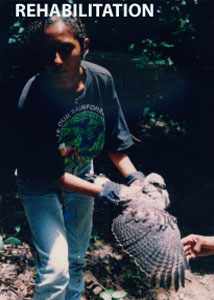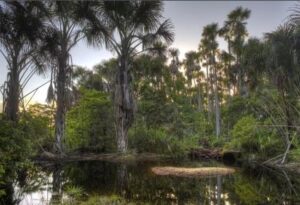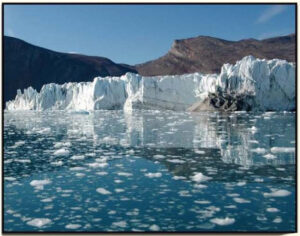Wetlands
What are Wetlands
Wetlands are areas of land where there is a large percentage of water – such as a swamp. They are found all over the world from the cold tundra lands of the north and south to the hot steamy rainforests of the equator.
Most contain freshwater, some are brackish and others are truly marine. Some wetlands are permanent features – e.g. the rivers of the Amazon Basin and the Caroni and Oropouche water systems in Trinidad. Other wetlands are temporary – e.g. wetlands formed after the onset of a rainy season – as found in the interiors of Africa and Australia. Fact: It is estimated that only 3% of the Earth’s surface is covered in wetland. Fact: The Amazon Basin – the greatest rainforest on Earth – is a mosaic of wetlands.
Over two-thirds of the world’s freshwater is to be found in the 1100 tributaries which feed the Amazon River itself. Fact: The great tundra peatlands of Eurasia and North America, after the spring thaw, could be regarded as an enormous peaty wetland system, crowning the globe.
Birds and Wetlands
Wetlands are the homes for many types of bird including ibis, pelicans, herons, flamingos, cranes, waders and, of course, wildfowl. They are also important feeding and resting places for these birds on migration (as well as for smaller migrants such as swallows, martins, etc.). Fact: It is estimated that over 7 million shorebirds from Nothern Europe overwinter in the West African wetlands.
Such wetlands can record vast numbers of birds – The Banc d’Arguin of Mauretania can support a density of 4,000 birds per square Kilometer! Wetlands are important nesting sites. The Caroni in Trinidad supports species of Ibis including OUR protected National Bird, the Scarlet Ibis, Herons and many more. 160 species of birds are found in Caroni. In 1953 it was made a Wildlife Sanctuary.
In 1987 it was made a Protected Area under the Forest Act. In 2005 it was declared a Ramsar Site, protected under Government of Trinidad and Tobago International Treaty. The Nariva wetland, home to many endangered species such as Blue and Gold Macaws, Red Bellied Macaws, Waterfowl and the Savannah Hawk. It is a site of many releases of the PAPWFT including Fulvous whistling tree ducks, Wild Muscovy ducks and Black Bellied Whistling Tree Ducks.

Many injured birds are brought to the Trust; we have had some successes, working with vets with this particular expertise and with the Wildlife Orphanage and Rehabilitation Centre. The success stories include a Masked/Blue faced Booby, Yellow Headed Caracara, Ospreys, a Brown Pelican, a Gray Hawk, Gallinules, Jacanas, Song Birds, Psittacines and different Owl species.
This rare, deep ocean-going migrating seabird was brought into the Trust in early March by Mrs Lendor from the Chaguanas area. The Trust’s Vets and avicuture team took care of it and when it become very strong, healthy and active, was released.
Trust Officers made a provisional identification and consulted Geoffrey Gomes, who in turn consulted Martyn Kenefick,. We all came to the conclusion that this rare bird is a juvenile Pomarine Jaeger (Stercorcarius pomarinus) rather than a Parasitic Jaeger (Stercorcarius parasiticus).

Wetlands - Link in the Water Cycle
Wetlands play a vital role in the cycling of water on the planet. Water evaporated from the seas or transpired from plants returns as rainfall filling both upland and lowland wetlands. Wetland systems, and their forested counterparts, slowly release their waters either to the atmosphere or to the sea, playing a major role in governing world climate. With the flow of water arrives a steady input of nutrients from the surrounding land – the organic silts and sediments settle and, warmed by the sun, provide ideal conditions for the growth of microscopic plants and animals – the base of aquatic food chains. Fact: A well established marsh is estimated to be up to 50 times more productive than grassland and about 8 times as productive as cultivated land.
The Water Hyacinth (Eichhornia speciosa) – Pointe-a-Pierre Wildfowl Trust:This important plant is used as a food source at the Trust. Leaves, insects and crustaceans in the roots are eaten by waterfowl. A water purifer, this plant also absorbs large amounts of dangerous pollutants (including mercury and lead) from the water and helps keep any water area clean. Prolific, 10 plants can reproduce to cover an acre of water in 8 months.



